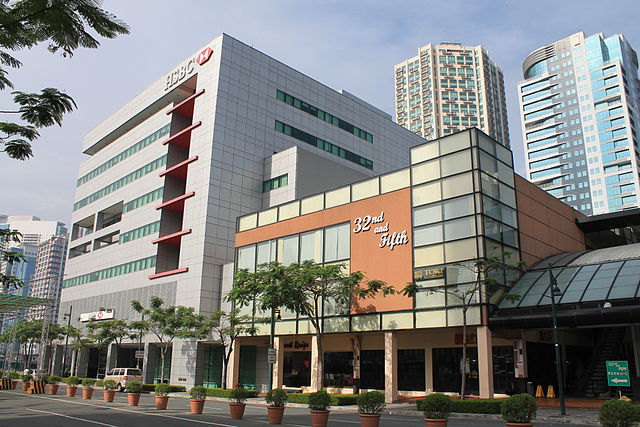Business and Economy
HSBC ups GDP forecast for next year

The HSBC building in Manila, Philippines (Photo By Elmer B. Domingo – Own work, CC BY-SA 3.0)
MANILA – – Banking giant HSBC revised upwards its growth forecast for the country’s Gross Domestic Product (GDP) for 2017 and 2018 given the sustained improvement of the domestic economy.
HSBC, in a study, hiked its growth forecast for the domestic economy from 6.
5 percent to 6.7 percent for the two-year period.
These latest forecasts are above market consensus, which is 6.
6 percent for 2017 and 6.4 percent for 2018, the study showed.
For 2019, the bank forecasts the domestic economy to grow by 6.8 percent.
In the third quarter this year, GDP grew by 6.9 percent, higher than the previous quarter’s 6.7 percent, bringing the growth in the first three quarters this year to 6.7, within the government’s 6.5-7.5 percent target for the year.
Among others, the study said bank lending remains robust in some Asian countries, including the Philippines.
“The Philippines remains on solid ground as one of Asia’s growth leaders, and it will likely stay in that position in 2018 as well,” it said.
The study cited that the domestic economy provided one of the upside surprises in Asia in the third quarter this year and this growth, it said, “suggests that the country is firing on all cylinders, with all expenditure components contributing positively for the first time since 2014.”
It noted that private consumption and fixed investment remain strong and “continue to lead the way for growth, as has been the case since 2014.”
These two factors, it said, shared in three percentage points (ppt) and two ppt, respectively, to growth in third quarter “making up the lion’s share of economic expansion.”
Government spending is also a plus to GDP, adding about 0.9ppt in both the second and the third quarters this year.
This contribution, the study said, is “far above the long-term trend of 0.4ppt.”
“This in an important development, if it persists, as it could suggest that the government is finally curbing its historical pattern of underspending,” it said.
The study, however, noted “not all is rosy”, with fixed investments posting some deceleration for five straight quarters until the third quarter this year.
It, on the other hand, pointed out that slowdown of growth of fixed investments “comes after a long stretch of blockbuster growth.”
Risks to growth include slower-than-expected implementation of infrastructure projects “and/or the government reverting to its historical pattern of underspending.”
“A realization of those risks could reduce investor and business confidence and drag down growth,” it said.
Another risk is the gradual shifting of labor from agriculture to constructions “in an effort to take part in the government’s infrastructure push”, which in turn, has pushed male unemployment rate.
“For now, we believe this development is largely transitory and frictional in nature, but it poses downside risks to growth if the economy is unable to absorb these workers and/or the government is unable to fully realize its infrastructure plan,” the study said.
“Positively, external risks remain benign as domestic demand often largely offsets any negative impacts from the external sector,” it added.





















